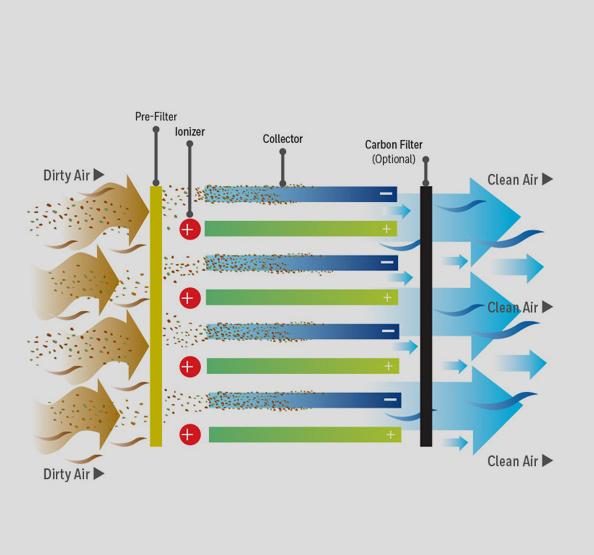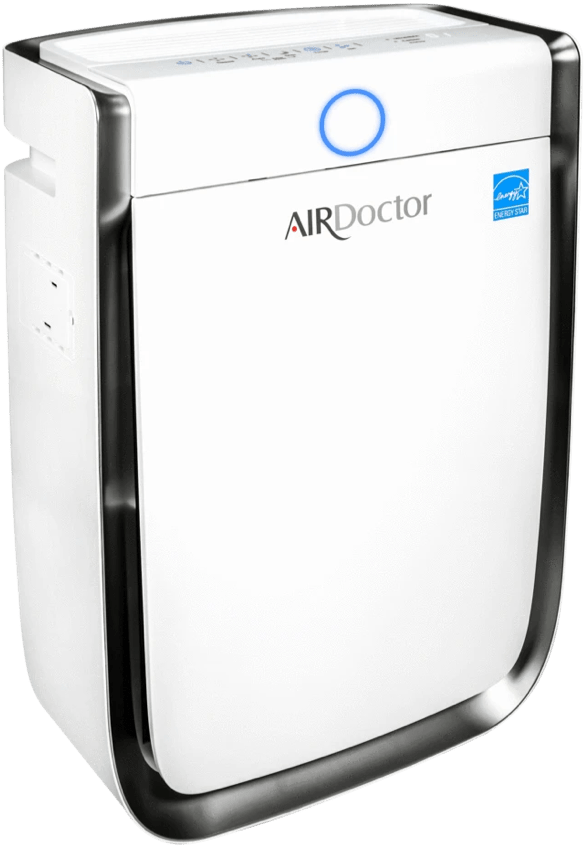Over 40 years ago I was recommending ionizers for my patients. It’s a great way to get particles out of the air, whether bacteria, viruses, dust or pollen. My main work at that time was with allergies and airborne allergens were the target: dust, dust mite, molds, pollens, etc.
But the principle works just as effectively with viruses, as a 2015 study published in Scientific Reporting showed. It’s effective at protecting individuals, whereas masks and social distancing are proven not to work—not “no proof” they work, but proof they DON’T work.
The basic science is simple: drive negatively charged ions (the good guys) into the ambient air. These bump into unwanted particles and zap them (most pathogens and toxins are already positively charged). Negative ions are good for us; you meet them at waterfalls, mountains and the seaside. You can feel the goodness!
Actually, there are two types of ionizers. The type just described and those with positively charged electrical plates or collectors. The released negative ions turn the airborne particles or viruses negative, which are then electrostatically attracted to the positive collector and thereby taken out of the air. It’s just important to keep the plates clear; they soon get coated and efficiency drops. (see diagram)
The 2015 study used this latter method. The researchers demonstrated effective prevention of airborne transmitted influenza A virus infection between animals (100% effective) and also how inactivation of virus was achieved (>97% effective).
Moreover, the device effectively captured airborne transmitted calicivirus, rotavirus and influenza virus, with recovery rates up to 21% after 40 min in a 19 sq. m. room.
Good to invest in one of these if there is a pandemic virus going around!
[Hagbom, M. et al. Ionizing air affects influenza virus infectivity and prevents airborne-transmission. Science. Rep. 5, 11431; doi: 10.1038/srep11431 (2015)]
Something Else To Consider
What about an air purifier (or air filtration system)?
As you likely know, good air purifiers are potentially effective at reducing airborne pollutants in the home. They may remove dust, mold, pollen, smoke, viruses, bacteria, pet dander, volatile organic compounds (VOCs), “off” odors, and other allergens that can trigger allergies and other respiratory symptoms.
Air pollutants can increase the risk of cancer as well as respiratory and heart disease. Studies suggest cancer risks for pollutants emitted indoors—specifically VOCs (volatile organic compounds)—were higher in houses with lower ventilation rates.
VOCs are a health threat because these are the active chemicals that interact with us biologically: PVC, benzene, formaldehyde and toluene, for example.
I’m not going to pay much attention to those here, not because they are unimportant to us or our health, but because I’m talking essentially about particulate air pollution: dust, mold and danders, bacteria and, of course, VIRUSES!
If we can find an efficient air-scrubbing device that removes sufficiently small particles, then we can trust it to reduce or eliminate any virus hazard present. The size of viruses is usually given in nanometers (billionths of a metre) and can be anywhere between 10 nm up to 100 nm. Sometimes, microns are used; these measurements equate to 1,000 times more than a nanometer (1 micron = 1,000 nm).
Now it so happens that HEPA filtration (high-efficiency particulate air filtration) can remove particles down to about 0.3 of a micron (300 nm). That’s not good enough for virus protection.
But there is one device which boasts (and I use that word advisedly) an UltraHEPA® filter, which removes particles down to 0.003 microns. That’s 100 times smaller than HEPA specifications. It takes out 99.9% of all bacteria, viruses, molds and dust. I have two in my home and it’s called the Air Doctor (AmazingAir in the UK).
It’s fairly smart and knows when the particle load in the air rises and speeds up in response. Then settles back to very quiet running, once the air is cleared of the threat; quiet enough to be used in the bedroom, without waking sleepers.
The Air Doctor company was founded in 2016 by Peter Spiegel and Kate Williams. The brand is part of Ideal Living, and operates from its headquarters in California. The price for an Air Doctor is good and renewing the filters is very simple and economical.
And before you ask, it takes care of removing ambient VOC chemicals too. It’s probably the best air filter around.
One other thing to consider is the CADR ratings. CADR stands for clean air delivery rating, and describes the volume of clean air that an air purifier produces on its highest speed setting. The higher the CADR, the faster and more efficient the air purifier is.
Whatever filter you choose, please don’t be fooled by air purifiers that promise “HEPA-like” or “HEPA-style” filtration. It either is, or it isn’t, a HEPA.
Seeking reliable information? Learn facts that could help you make informed decisions about your health. Learn more ? https://virusblitzing.com/






